|
"For me, every hour is grace. And I feel gratitude in my heart each time I can meet someone and look at his or her smile." - Elie Weisel I am writing this in early October but by the time this is published, election day will have come and gone. We may or may not have election results yet. And I’m anticipating that whatever the outcome, this week will be tense and fractious. How lovely that we have a holiday that reminds us to be thankful later this month. Gratitude is about living in grace. If you navigate over to our About Us page, you’ll see this quote by Swami Satchidananda guides our every decision at 5KY. The goal of yoga and the birthright of every individual is a body of optimum health and strength, senses under total control, a mind well-disciplined, clear and calm, an intellect as sharp as a razor, a will as strong and pliable as steel, a heart full of unconditional love and compassion, an ego as pure as crystal, and a life filled with Supreme Peace and Joy. That is grace. Stepping into our natural birthright of calm, strong, and balanced body, mind, and emotions. It isn’t something that we need to do, per se. It is what we are. Swamiji liked to joke (though there’s always an element of truth in his humor) that his religion wasn’t Hinduism but un-doism. Yoga can help us peel away the layers of our past experience that get in the way of this birthright. Maybe this sounds really difficult. The idea of having a will that’s as strong and pliable as steel or an ego as pure as crystal can feel very intimidating. The good news is, yoga teaches that this is our natural state. It’s only the other things that unbalance our equilibrium. Especially as a "down-to-earth" Midwesterner, it sometimes feels uncomfortable to admit to aiming for a goal so lofty. Like, who do I think I am to believe I have a pure ego? But this is what I absolutely love about yoga. We don’t have to be or feel a certain way to get in touch with this birthright. Yes, many of us will never attain enlightenment (at least in this lifetime) and no one is perfect, even those that are enlightened. We are all human. We all make mistakes. But that doesn’t mean we can’t get the benefits of grace in the here and now. In fact, the very first Sutra in the Yoga Sutras of Patanjali is translated to “Now the exposition of Yoga is being made.” It indicates that at every moment, we have a choice of whether to practice Yoga. To live our union with ourselves and with all other things. Because here and now is where we practice. Not in the past and not in the future. Now. At any moment in time, we have the choice to be filled with supreme peace and joy. Nothing external can stop this opportunity, though external things can distract us from it. As we wrap up this difficult year and hope for a bright 2021, let’s not forget to feel grateful for the beautiful things we have in our lives right now. Let’s live in grace together. In honor of giving thanks, I would like to leave you with a meal prayer we use in Yoga for the Special Child and Integral Yoga. An audio recording of the meal prayer is also below. Wishing you a month filled with grace and gratitude!
0 Comments
Swami Satchidananda spoke about habit-setting like changing a car's oil. To get the dirty oil out, you simply pour clean oil in and the old oil is purged from the engine. Our habits are like this too: if we focus on adding good habits, we will slough the bad habits off eventually. If we focus on reducing or removing the bad ones, it seems to only exacerbate the issue. Apparently, this is called ironic process theory, as related this month by the brief New York Times article, "Resistance Is Futile. To Change Habits, try Replacement Instead." With the big spring clean upon us, many of us look to "clean" ourselves. Which often takes the form of habit-setting.
Purity is a niyama (observance) in Raja Yoga. Although purity might be taken to mean maintaining personal hygiene rituals, wearing clean clothes and keeping a clean house, it also means creating purity within, physically and mentally. Some people have a negative reaction to the word "purity" because today, it may connote an impossible standard of goodness. What I think Patanjali was suggesting is to have a Replacement attitude instead of a Resistance attitude, as described by the NYT and Swami Satchidananda. We don't have to be completely pure to get benefits from making a choice that leads us to more purity. Even though there is always dirt, shouldn't we sweep our house from time to time? Yoga and Ayurveda offer several practices that aim to purify us on many levels. Hatha yoga keeps our bodies strong and supple, meditation keeps our mind nimble and focused, and a healthy diet ensures we have good, clean energy to run on. There are other practices, called kriyas, that some yogis use to create a purer internal environment, such as using a neti pot or practicing eye exercises. Fasting is another cleansing practice espoused for centuries by yogis, that is gaining credibility in the scientific world. For a more scientific approach to fasting than I'm going to take here, you can look at this article from CMAJ or an opinion from a neuroscientist on the Johns Hopkins Health Review. Whether or not you fast, it's still a good idea to take a break from foods that tax the digestive system. This is especially true as we transition from heavier foods that warm us in the winter, to more raw foods (which can also tax the system) in the spring and summer. To make the transition smoother, either from one season to another or as an intermediary before and after fasting, yogis eat kitchari. An Ayurvedic recipe traditionally made of mung beans and white rice, it is very easy to digest, filling, and nutritious. Ayurvedic practitioners use it to purify the blood and cleanse the body. It is also delicious. Very, very delicious. Oh yeah, and super easy and fast to make! So if you'd like to replace an old eating habit with a new, tasty, purity-enhancing habit, try this recipe for kitchari. Five Keys Yoga tested and approved. Yum! Kitchari
4 servings, 30 minutes
Ingredients
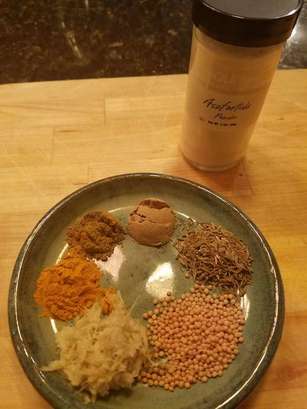
1 C mung dal
1/2 C white rice 2-3 C water 2 T ghee (clarified butter) 1 T grated, fresh ginger 1 tsp mustard seeds 1 tsp cumin seeds 1/2 tsp cumin powder 1/2 tsp coriander powder 1/2 tsp turmeric powder Pinch of hing (asafoetida powder) Salt to taste I usually add a few dried, hot chilies (chopped) and any vegetables I have in the fridge, but that is optional.
Cook the Dal and Rice
Temper the Spices
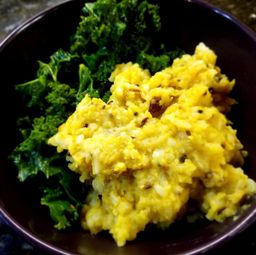
I like to eat kitchari with a big heap of steamed kale. The crunchy texture of the kale goes so well with the creamy kitchari, and the extra fiber completes the meal. I often top with nutritional yeast or Bragg's liquid aminos for flavor and extra vitamins and nutrients. You can also adjust the seasoning to suit your dosha, or Ayurvedic type.
Did you try the recipe? How did it taste?
|
Archives
July 2024
About
Just some thoughts about yoga as I go... Categories
All
|
FIVE KEYS YOGA
|
WHAT OUR CLIENTS SAYFive Keys is fantastic! The studio is lovely and soothing, and the teachers are very caring and attentive. |
I've ... probably been to 25 different yoga studios. This is one of the most welcoming, calming spaces with very talented instructors. |
I love this yoga studio. It's a great balance of a good workout and relaxation and feels like a real community. |
An ideal studio for someone new to yoga. |


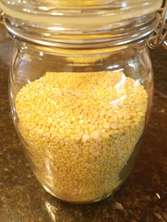
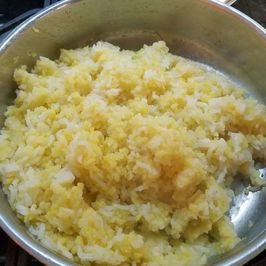
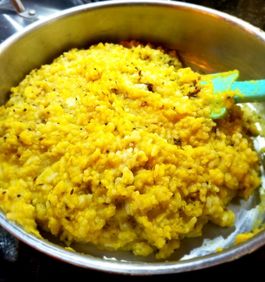
 RSS Feed
RSS Feed
